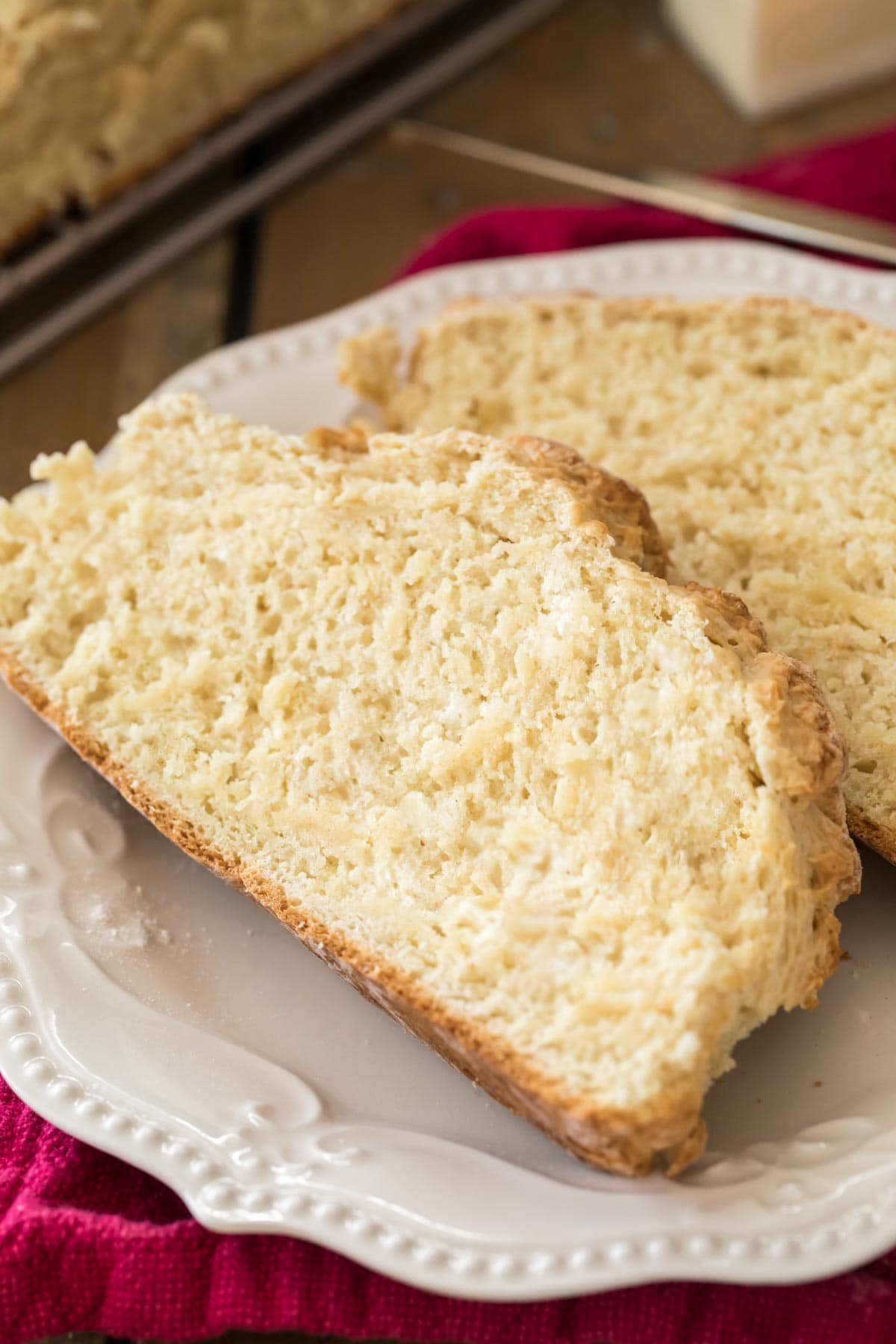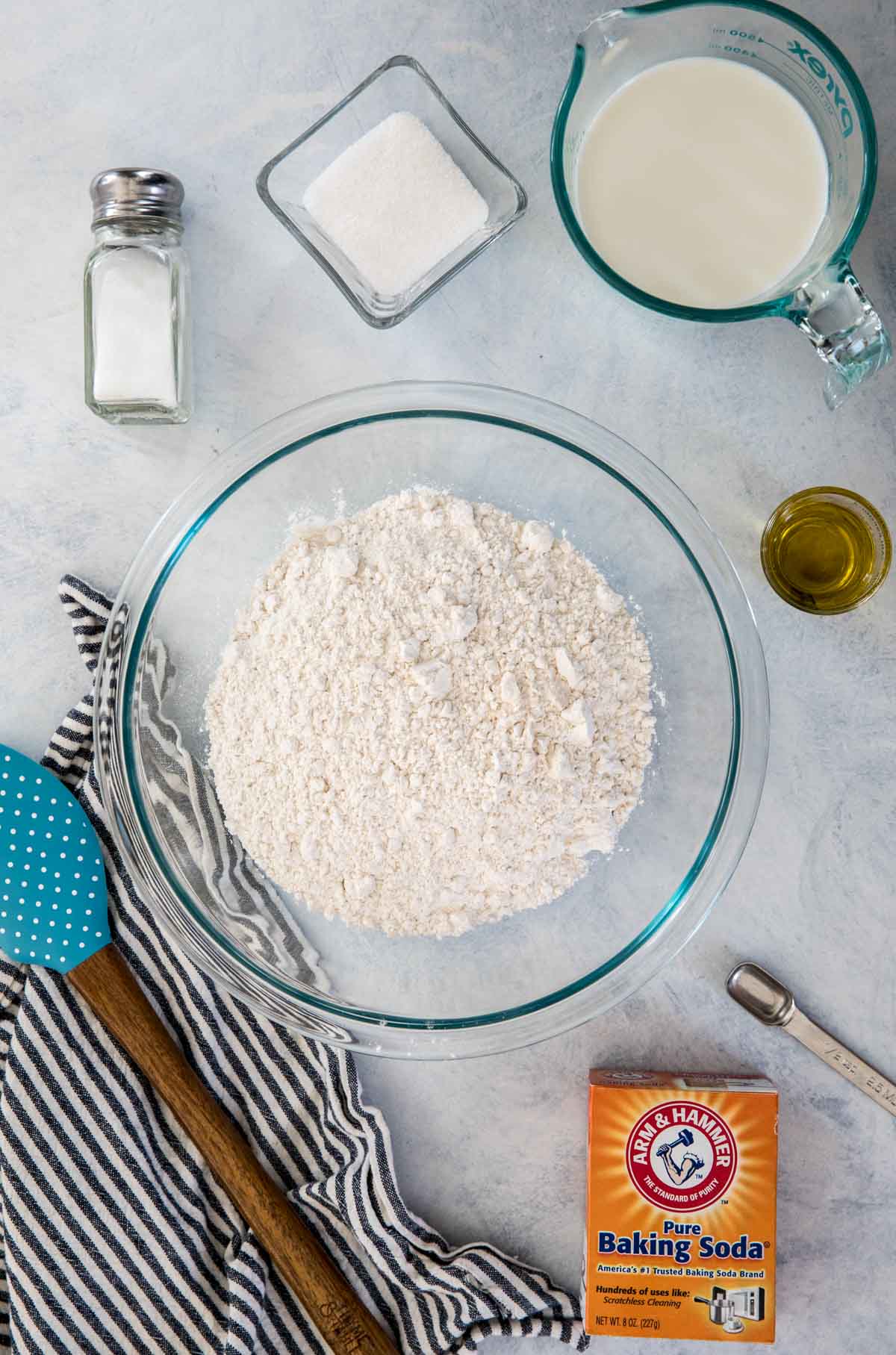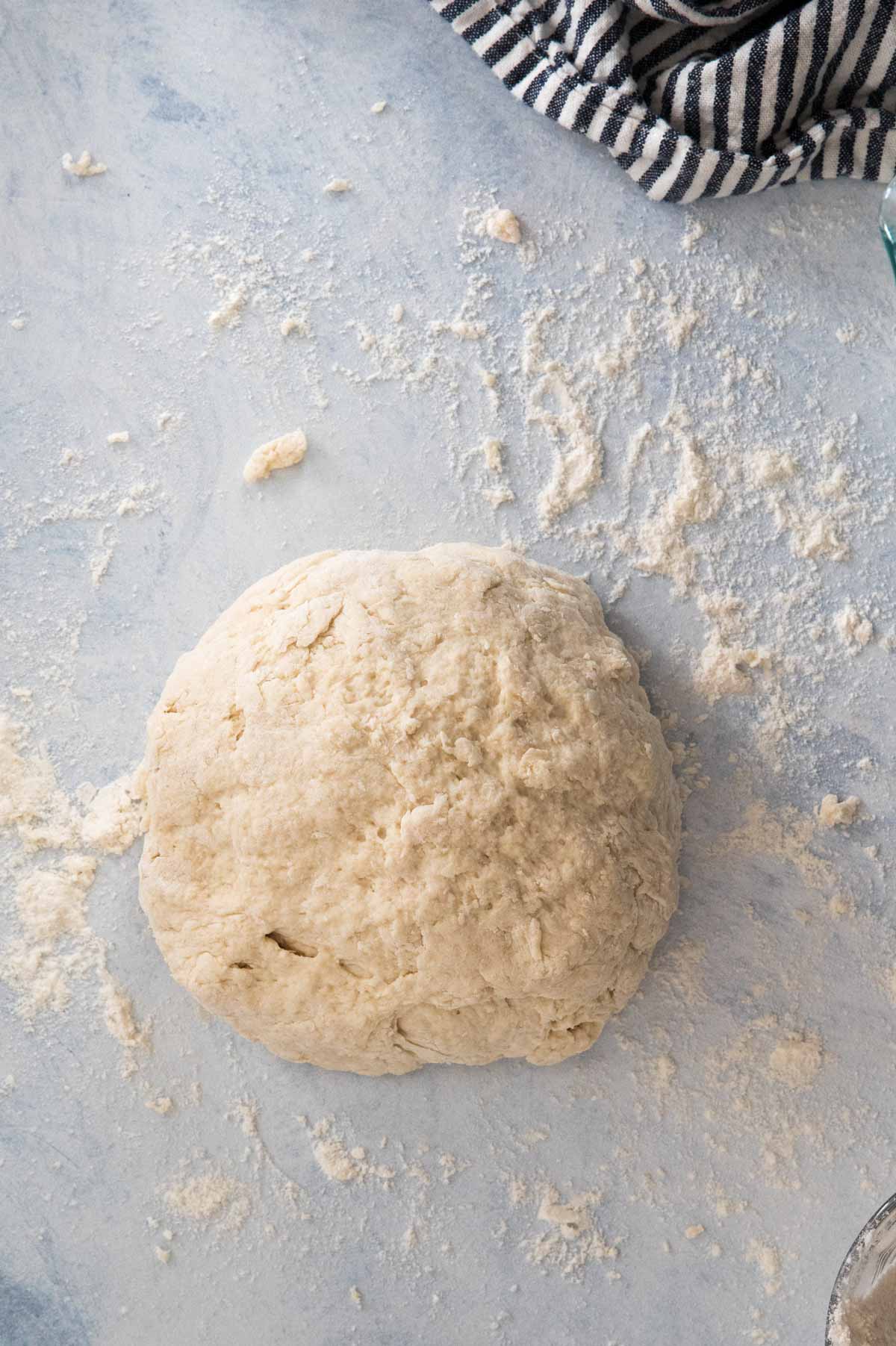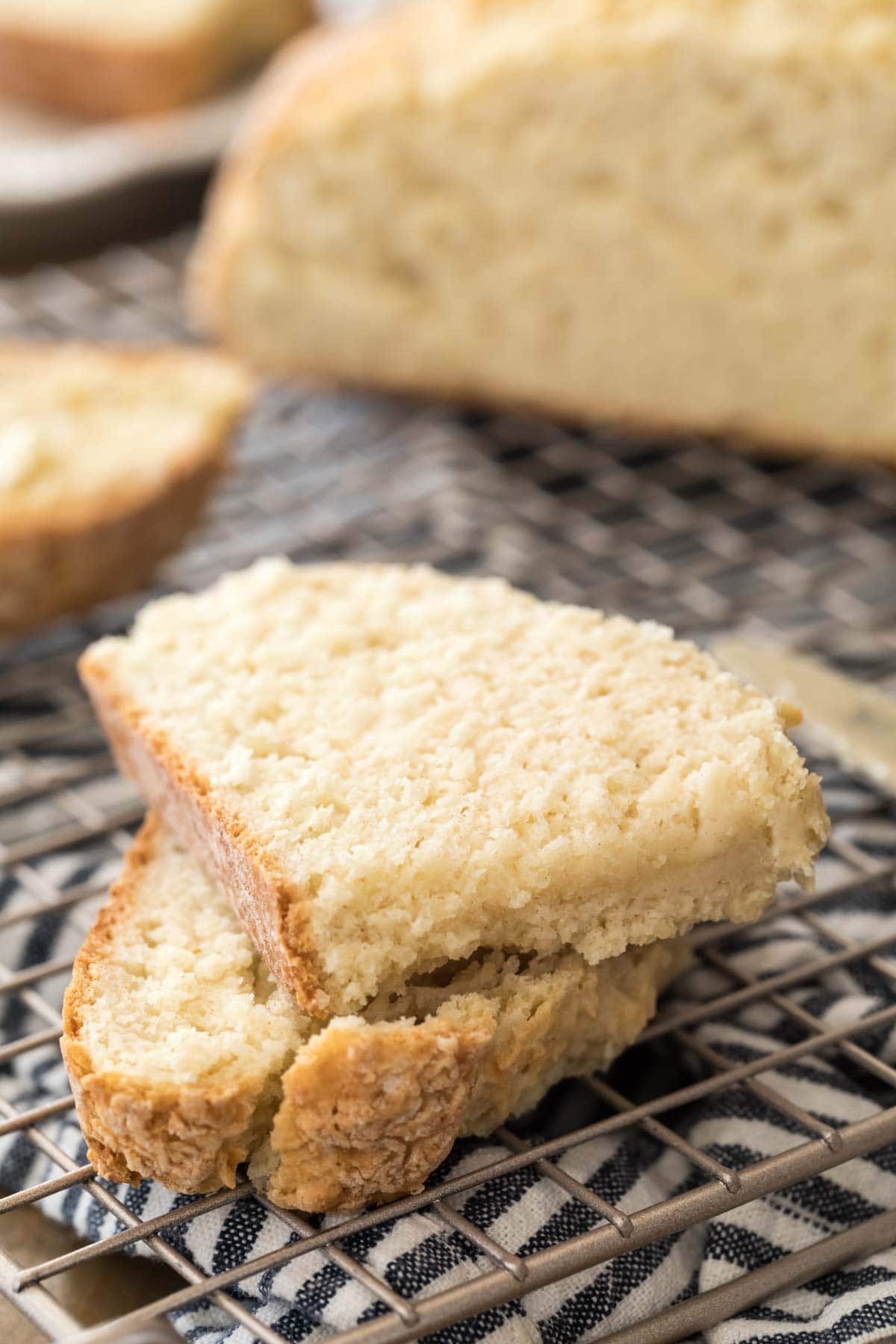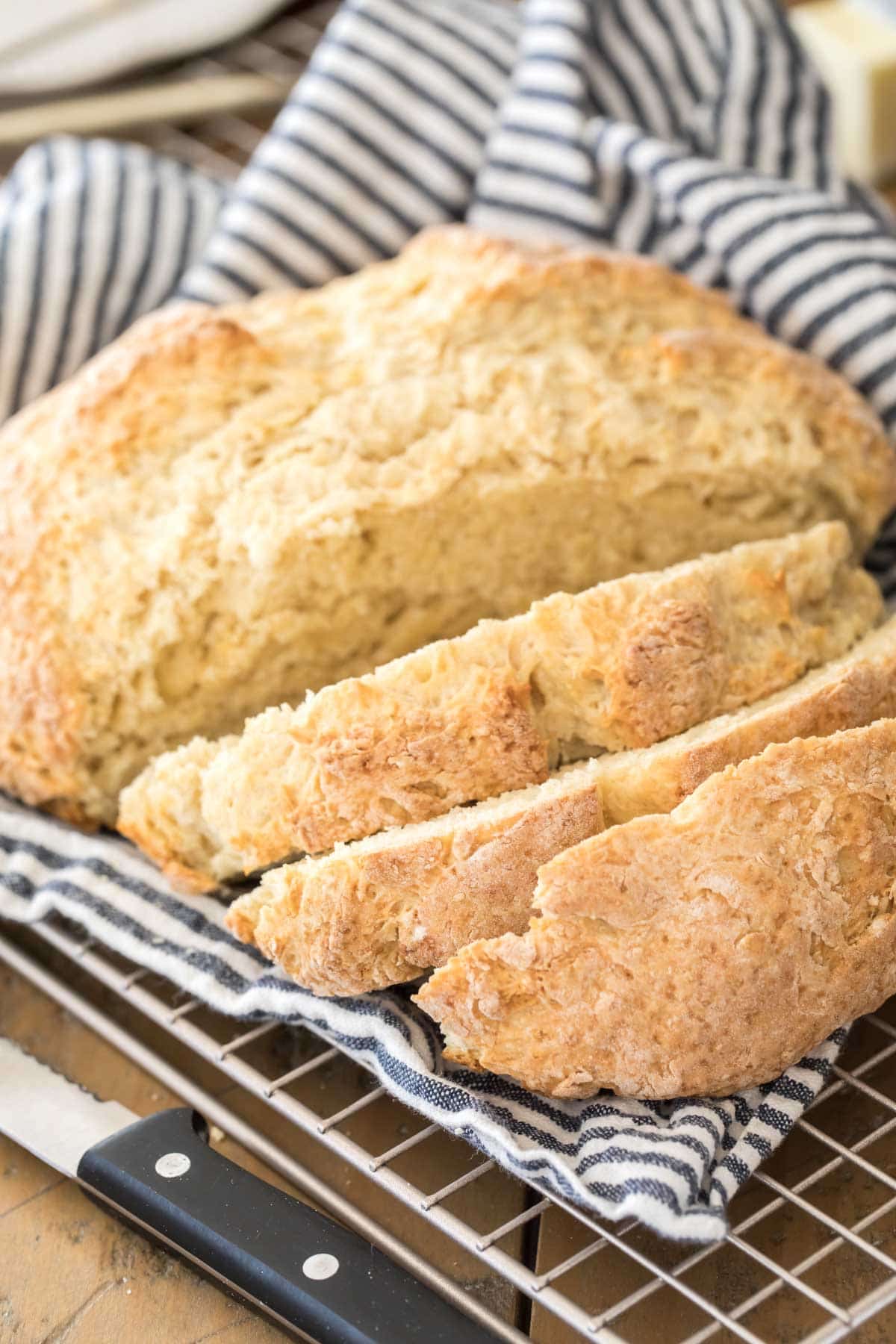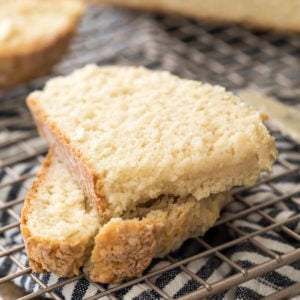By popular demand! A no-yeast bread recipe! If you haven’t been able to find yeast in your grocery store recently, today’s recipe may come in handy. Maybe you’ve tried it before if you’ve ever had Irish soda bread. This bread gets its name because, rather than being leavened with yeast (like my classic bread recipe), this one is leavened with (baking) soda. It yields a slightly dense loaf with a rustic, crusty exterior. It does taste different from traditional (yeast-raised) breads, and the flavor reminds me slightly more of a biscuit than sandwich bread. Still, it hits the spot if you happen to have a bread craving. Zach and I have been eating it with dinner all week (I’ve been making about one loaf a day recently, no lie) and it works just as well as traditional bread for sopping up meat sauce from a plate of spaghetti or ziti or enjoying on its own, covered with puddles of melted butter.
Ingredients & Substitutions
Our ingredient list is simple, and I’m hoping you have everything you need on hand already.
Flour. Use all-purpose (plain) flour. I do not recommend self-rising flour here and while bread flour would work it’s not necessary. If you’d like to substitute some of the all-purpose flour for whole wheat flour (up to 50%) that will work nicely. Sugar. This adds a depth of flavor to the bread without making it sweet. Some soda breads use honey instead of sugar, and that would work here as well, just whisk the honey in with the buttermilk before adding to your ingredients. You may need a bit more flour if you make this with honey. Salt. It may seem like a lot, but it’s important for the flavor. Olive oil. This may be omitted if you don’t have it, but I love that it makes the bread slightly more chewy and dense and more like traditional bread. Canola oil or vegetable oil could also be substituted, and I’ve been meaning to try this with melted butter, which I think would work nicely and add flavor. Buttermilk. If you don’t have buttermilk you can make my easy buttermilk substitute instead (I link to instructions on how to do this in the recipe) by mixing together whole milk and either lemon juice or vinegar. You do need the acidity from the buttermilk or from the vinegar/lemon juice here or your bread will not turn out properly. Baking soda. No substitutes here, unfortunately. This reacts with the buttermilk to give you a nice round loaf of no yeast bread.
Many traditional soda bread recipes mix in raisins or currants and you are welcome to do that here as well!
The Dough
Opinions on whether or not to knead the dough vary, but I’ve found that doing so gives me the best, bready-est texture. Handle the dough quickly and gently, but do knead it several times to work your ingredients together thoroughly. Don’t overdo it. I transfer it to my countertop to knead, but this could be done directly in the mixing bowl. When your no yeast bread dough is ready, it should be a bit shaggy and a bit sticky, but neither too wet nor too dry (how’s that for vague! See my video in this post if you need a better visual than the photo above). It’s OK if the exterior seems a bit floury. Make sure that your oven is fully preheated or very close to it before you begin so you can transfer your bread dough to the oven as soon as you’ve worked all of your ingredients together. The baking soda and buttermilk will begin reacting with one another immediately, so get that dough in the oven ASAP so they can work their magic.
Tips for Making No-Yeast Bread
Don’t add all of your buttermilk at once, you may not need all of it. Start with 1 cup then add more as needed until the dough has reached the proper consistency. I’ve found especially that if I’m using a buttermilk substitute I usually don’t need to use all of the milk, as it’s typically thinner. Scoring the dough helps the center to bake evenly (so it’s not gooey and under-baked in the middle) and allows the crust to expand. The no yeast bread should be golden brown on the outside when finished baking and should sound hollow when tapped. As with almost all of my recipes, bake this bread in the center rack of your oven. As with all breads, I think this one is best served warm, but it will keep for several days in an airtight container at room temperature.
Enjoy!
More Recipes You Might Like:
No Yeast Donut Holes No Yeast Cinnamon Rolls Homemade Biscuits No-Yeast Monkey Bread
Are you more of a visual learner? Check out my YouTube channel where I show you exactly how I make this recipe step-by-step in my own kitchen.
